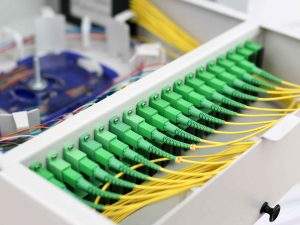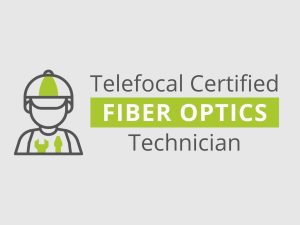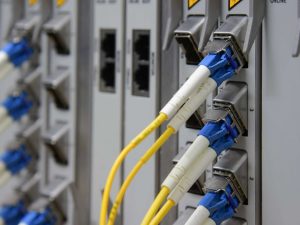DWDM and Optical Networking for Metro and Long Haul

Course Overview
This course provides participants with a basic to in-depth understanding of optical networking, with a focus on DWDM, OTN, and Layer 2 technologies, which are progressively supplanting traditional SDH/SONET systems.
Beginning with the fundamentals of optical fiber and various transmission media, the course delves into a thorough examination of the installation and design aspects of optical networks. Participants will gain an in-depth understanding of DWDM networking, exploring its core components and technologies.
The course will also include an analysis of OTN and other relevant technologies, as well as planning and operational considerations to equip participants with the skills needed to design, optimize, troubleshoot, and manage optical networks effectively.
Target Audience
This course is designed for fiber core supervisors, planners, technicians and professionals, strategic and technical telecommunications managers, consultants, IT professionals, systems engineers, software engineers, marketing and sales personnel plus other telecommunications workers who plan on using, evaluating or working on DWDM and optical networking in metro and long haul scenarios.
Duration & Training Format
- Classroom: 5 days
- LIVE Virtual: 35 hours
- A minimum of 8 or more participants is required for a Classroom session to commence.
- A minimum of 6 or more participants is required for a LIVE Virtual session to commence.
- LIVE Virtual courses can be conducted for 5 hours or 7 hours daily. Please note that the number of training days will be extended if you opt for 5 hours daily.
Upcoming Course Dates
16 – 20 Jun 2025 (Mon – Fri), GMT +8
If you are keen on attending the above scheduled course, please register your interest via our course enquiry form.
Course Objectives
After completing this course, participants will be able to:
- Understand the fundamentals of optical transport, including the basic principles and concepts underlying optical communication systems
- Identify and analyze major optical fiber technologies, gaining insights into different types of optical fibers and their applications in metro and long-haul networks
- Acquire in-depth knowledge of DWDM and related technologies, including the principles of wavelength multiplexing, optical amplification, and dispersion compensation
- Demonstrate proficiency in DWDM network design and performance optimization
- Develop skills in troubleshooting and rectifying faults within DWDM networks
- Analyze and work with traffic matrix data, gaining the ability to understand and manage the flow of data through optical networks efficiently
Course Outline
- Transmission Media
- Wired Vs Wireless Media
- Multiplexing: TDM Vs FDM
- Terrestrial Vs Subsea Cables
- Construction of Optical Fiber Cable
- Voice Sampling and Pulse Code Modulation
- Basic Data Rates: E1/T1/E3/T3
- Optical Fiber Basics
- Optical Communication Model
- Optical Spectrum
- Typical Wavelengths
- Working of Optical Fibers
- Multimode Vs Singlemode Fiber
- Fiber Geometry Mismatches
- Power Budget Calculations
- Optical Fiber Splicing
- ITU Standards for Optical Fiber
- Planning and Installation of Optical Fiber Cable
- Planning Steps
- Basic Inputs (Site selection, Number of Fibers, Section Lengths, Physical Topology, Traffic, Demand, Amplifiers, Regenerators, etc.)
- Optical Network Parameters (Bandwidth Demand Matrix (E1, E3, STMx, FE, ESCON, etc.)
- Line Side Capacity (STM-16/64/256)
- Protection Technique (MSP, SNCP, etc.)
- Synchronization
- Splice Closures and Splice Trays
- Optical Fiber Deployment
- Direct Buried
- Laying in Duct
- Laying by Pulling
- Laying by Air Blowing
- Cable Joints
- Aerial Cable
- SDH
- Advantages of SDH/SONET
- SDH Frame Structure
- Multiplexing Hierarchy
- From E1/F3/F4 to STM-1
- Protection Mechanisms
- Overhead Bytes
- VCAT and LCAS
- TDM to Packet Migrations
- MPLS-TP and Other Successors of SDH
- DWDM
- Benefits of DWDM
- CWDM vs DWDM
- Fiber Attenuation
- ITU Fiber Standards for WDM
- Dispersion Slopes of Different Fibers
- ITU Wavelength Grid
- DWDM Components
- EDFA Operations
- RAMAN Advantages
- Coherent DWDM
- Non-Linear Effects
- ROADM
- OTN Metro and Long-Haul Applications
- Comparing OTN and SDH
- OTN Standards
- OTN Multiplexing Hierarchy
- ODU0, ODU1, ODU2, etc.
- OTN Structure
- OTN in Metro Network
- OTN in Long Haul Network
- OTN Packet Optical Networking
- TDM Migration
- Carrier Ethernet
- MPLS-TP
- L2 OAM
- Resilience in L2
- QoS
- Case Studies
- Operations and Troubleshooting of Optical Networks
- Basic Tools for Optical Networks
- Optical Fiber Cleaning and Repairing Tools
- Optical Signal Measurements
- Optical Spectrum Analyzer
- L2 Measurements
- Troubleshooting Best Practices
- NMS and NOC
Pre-requisites
- Knowledge of the principles of telecommunication transmission systems.
- Prior attendance of Telefocal’s SDH and DWDM Fundamentals is highly desirable.
Testimonials




